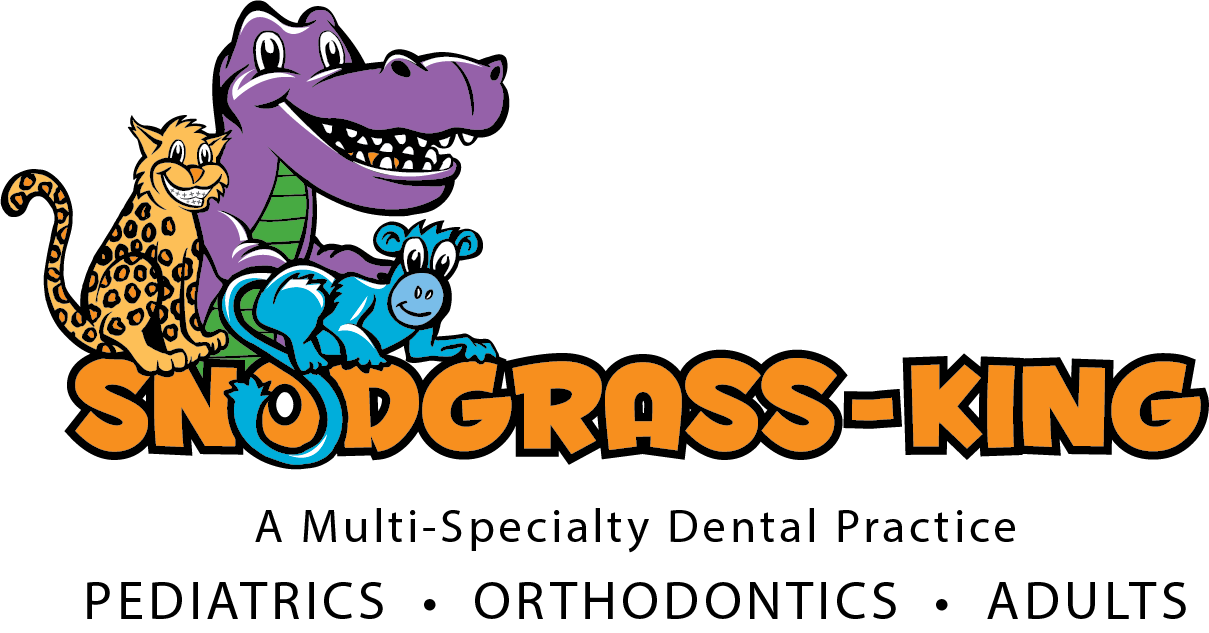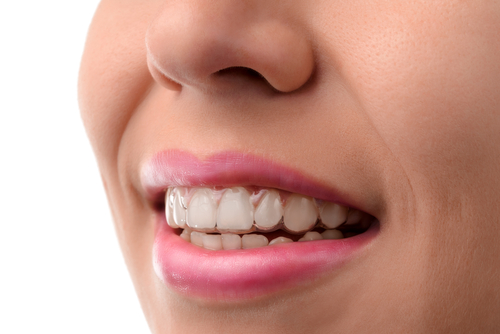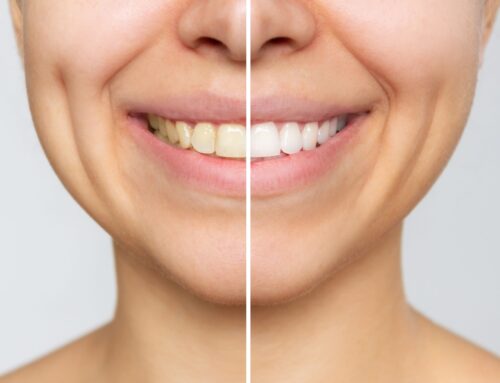Debunking 4 Myths About Invisalign
Orthodontic treatment is beneficial for a variety of reasons. It can realign bites and straighten crooked teeth, and the end result of an improved smile can no doubt provide a big boost to your overall self-esteem. However, many find the process of getting a tip-top smile to be a bit confusing and possibly even a little intimidating. Much of that is likely because orthodontic treatment options weren’t always as comfortable, discreet, and effortless as they are today.
Way back in the early 1700s, a dentist first attempted to straighten teeth with forceps, using force to shift the teeth and then tie them to adjoining teeth to keep them in place. Talk about painful! Obviously, that method isn’t used in modern times. Decades later, several smile-enhancing methods emerged, including expanders, braces, clear braces, and aligners.
For many years, metal braces were the gold standard for perfecting someone’s bite and smile. At first, these braces were large and chunky, and sometimes patients even had to wear headgear. Over the years, metal braces have become smaller, lighter, more comfortable and require fewer adjustments. You can even get ceramic braces made from a durable, translucent material that blends into your teeth, making them much less noticeable than metal braces, known as clear braces.Some patients still opt for metal or ceramic braces, but these days most adults and teens lean toward an even more discreet and painless option, which is Invisalign.
Invisalign first started popping up in North America in 1999. Since then, the smooth, clear, plastic aligners that correct teeth with nearly invisible trays have become the most popular cosmetic dental treatment on the market, even though most people have yet to become entirely familiar with what Invisalign is and how it works.
These clear, removable aligners could no doubt be the answer to your smile problem. However, many only know the myths about the virtually invisible straightening trays. We want to help clear up some of the confusion. The team at Snodgrass-King Dental in Middle Tennessee want to help you learn the truth about a few common Invisalign myths.
Myth 1 – Invisalign Is Not Ideal for Severe Misalignments
Many believe Invisalign is unsuitable for severely-crooked teeth and misalignments, but that is not true. One of the most significant advantages of Invisalign is that the aligner system is customized to your smile’s needs.
Invisalign can be an effective orthodontic treatment for the following conditions:
- Crossbites
- Overbites
- Underbites
- Open bites
- Gapped teeth
- Overcrowded teeth
If you have one or more of the above issues or want to realign a few crooked teeth affecting your smile, Invisalign can be a great option. Invisalign is for badly crooked teeth, too!
That said, there are some instances where Invisalign is not an ideal orthodontic option.
Invisalign is not an option in some cases where teeth need to be moved more than what is possible with clear aligners. In these cases, traditional metal braces may be necessary.
Additionally, Invisalign may not be suitable for people with certain types of misalignment, such as very severe overbites, underbites, or crossbites. The key word there is severe. In most cases of overbite, underbite and crossbite, Invisalign can be used successfully.
Lastly, while Invisalign is a great option for adults and teens, it is usually not recommended for children whose teeth are still growing and developing.
It is important to consult with a dentist or orthodontist to determine if Invisalign is the right treatment option for your individual case.
Myth 2 – Invisalign Takes Longer Than Traditional Braces
Because Invisalign involves switching out different aligners to wear instead of metal braces that are connected to the actual teeth, you might think aligners take longer to realign your teeth and bite. In reality, the Invisalign system is actually more efficient than traditional metal braces.
On average, the Invisalign system can take between 12 and 18 months to be effective. Two years is the average time most patients will need to wear traditional metal braces.
This time frame is just a general guide. Many factors determine how long aligners or traditional braces need to be worn. Some may need to wear them for less time, while in rare cases, others might need to wear them longer than 2 years.
There are things you can do to ensure Invisalign’s success in a timely manner. For example, failing to wear the aligners for the recommended 22 hours a day can affect the treatment’s success, increasing the time you will need to wear the aligners. Also, the severity of your dental issues may require a more extended period of orthodontic treatment.
Myth 3 – Invisalign Is Only Ideal for Adults
You may think the benefits of the Invisalign system are only suitable for adults who require orthodontic care. Although not recommended for young children because of their growth and development, orthodontic aligners are an excellent option for responsible teenagers.
In fact, Invisalign has a special type of aligner specially designed just for teenagers. Invisalign Teen is a version of Invisalign similar to regular Invisalign, but it has some features that are designed to accommodate the unique needs of teenagers.
Invisalign Teen includes compliance indicators that fade from blue to clear to help teens remember to wear their aligners for the recommended 20 to 22 hours per day. Invisalign Teen also includes replacement aligners in case any are lost or damaged.
Additionally, Invisalign Teen is designed to accommodate the continued growth of the teeth and jaws that occurs during adolescence.
If you are a parent considering Invisalign for your teen, make sure to communicate the importance of proper wear. Teens should also be responsible enough to remove the aligners before eating, cleaning, and brushing and flossing their teeth. This ensures no food residue and plaque builds up on the aligners or your teen’s teeth.
Myth 4 – DIY Aligners Are Just as Effective
You’ve probably seen ads pop up on social media or even seen tv commercials for other similar invisible aligner systems. There are also various DIY aligners available through the mail.
We understand the appeal. These aligners are less expensive, and everything can be done at home, which means you can avoid dental visits. Although the premise is similar, orthodontists do not recommend DIY aligner systems for very good reasons.
Firstly, DIY aligners are also ineffective at treating more complex dental issues, such as jaw misalignment or severe overcrowding.
Second, many DIY aligners promise to quickly improve your smile’s look. Unfortunately, moving the teeth too fast can damage the bone and gum tissue. Also, DIY/mail-order aligners may not move the teeth into a correct position, resulting in a misaligned bite that causes more harm than good.
Additionally, DIY aligners may not be made of the same high-quality materials as professionally-made aligners, which could lead to discomfort or even damage to teeth and gums.
We certainly understand their appeal, but DIY aligners are not a good idea for straightening teeth because they are not designed or supervised by dental professionals. Without the guidance of a dentist or orthodontist, it is difficult to ensure that the aligners will properly straighten the teeth and achieve the desired results.
In an attempt to save money, you might spend more money to fix issues that occur with many DIY/mail-order aligners. It is always best to consult a dental professional before straightening your teeth.
What About Clear Braces Instead of Invisalign?
Many kids find it exciting to get braces – almost like it is a right of passage when growing up. Unfortunately, adults don’t generally feel this way when confronted with the need for braces later in life. Nothing screams teenager more than a mouth full of metal.
Fortunately, modern technology and medical advances have brought about orthodontic alternatives to the traditional metal brackets and colorful rubber bands that we see most kids wearing when they smile with braces.
Clear Braces | Orthodontic Alternatives
Just worried about getting braces off faster and in a less noticeable method than traditional metal braces, and maybe not interested in Invisalign? Consider clear braces. The brackets are the same size and shape as metal brackets, but they are transparent and easily blend in with your teeth. This allows your braces to be far less noticeable.
Remember that proper oral hygiene is necessary to ensure that the teeth do not stain around the brackets. Also, take proper care of the appliance so as not to break a bracket or wire.
Invisalign vs Clear Braces
Both invisalign and clear braces are excellent options when wanting to straighten or align your teeth, but what are the pros and cons of each? Let’s break it down for you!
Invisalign Pros
Some of the main perks and benefits that you can reap from Invisalign includes:
- Less visit to the dentist than braces
- Can improve overbites, underbites, and crossbites
- Boosted self-confidence during treatment as these are clear trays that are easily removed
Invisalign Cons
Some Invisalign cons to consider include:
- Invisalign can be more expensive than traditional braces
- Invisalign may need to be worn for at least 22 hours daily, which can interrupt daily lifestyle habits
- Invisalign can be damaged, or loss easily due since they are easy to remove
Clear Braces Pros
- Clear braces also offer many benefits in the same way invisalign does, here are some pros to clear braces:
- Less noticeable material than traditional braces
- Easier cleaning due to the smooth surface of the braces
- Less discomfort due to smooth surface of braces causing less irritation than traditional braces
Clear Braces Con
- While there are benefits that come with clear braces, there are some cons to be aware of such as:
- Many clear braces have larger brackets than traditional braces
- Brackets of clear braces are more fragile and can break more easily than traditional braces
- Can be more expensive than traditional braces
Not sure which option is best for you? A Snodgrass-King orthodontist will discuss all your options and help you decide which course of treatment is best for you or your child.
We Are A Registered Invisalign® Provider
Are you looking to correct bite issues, crowded teeth, or oddly spaced out teeth? Then braces or Invisalign may be right for you. But if you want to be able to eat whatever you want, take out your orthodontic appliance at any time, or even avoid the common discomforts that can accompany metal appliances, Invisalign is a phenomenal choice! These clear plastic aligners are custom-fit and nearly invisible.
It is important to follow the Invisalign procedure. If you are removing your Invisalign appliance often, you may be prolonging your treatment. For best results, Invisalign should be worn 20 to 22 hours per day. Further, Invisalign is not made for correcting extreme orthodontic issues.
Take a few minutes to take the Smile Assessment Quiz at invisalign.com to see if invisible braces are a good fit for you! Don’t forget to come back and schedule your appointment; odds are you’re a great fit!
Invisalign and Clear Braces with Snodgrass-King Dental In Middle Tennessee
If you are looking for Invisalign or clear braces in Tennessee, you will want to be well-informed before making a significant dental health decision and major investment.
If you still have questions or are interested in the Invisalign system or other forms of orthodontic/dental care, we would love to help you!
Our dentist will determine if you are a good candidate for these clear aligners. The Invisalign system or clear braces can both be an excellent investment.
Snodgrass-King Dental Associates is proud to see not only children, but also adult orthodontic patients. We offer Invisalign at each of our five locations. Generally speaking there should not be a significant time difference between traditional braces and Invisalign; however, compliance with treatment is always a factor for the length of orthodontic treatment.
Ready to make a difference in your smile? Give us a call or easily request an appointment online today. You deserve to have a smile that boosts your confidence everyday.






